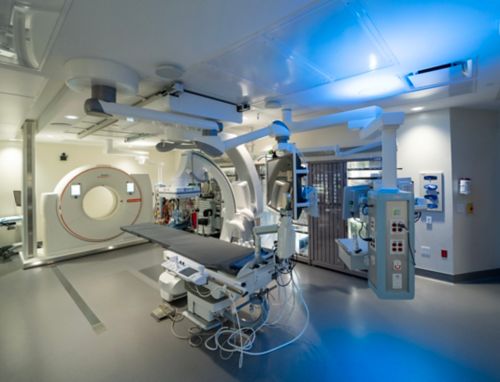Menu
Close
Back
Welcome to
Together is a new resource for anyone affected by pediatric cancer - patients and their parents, family members, and friends.
Learn MoreYour child must stay still during diagnostic imaging (DI) tests so that images are clear. In some cases, your child may get sedation medicines or general anesthesia for imaging tests such as a CT scan, PET scan, or MRI.
Many patients can have scans without anesthesia. The care team will decide whether to use anesthesia based on several factors such as your child’s age, the type of scan, how long the scan takes, and your child’s medical needs.

Some patients may need sedation or anesthesia medicines to help them stay still during imaging tests.
Your care team will instruct you and your child on how to prepare for the imaging test. For scans with anesthesia, your child may need additional tests or appointments. Your child’s schedule may include:
Sometimes, your child must go without food or drink before certain procedures, scans, or tests. Going without food before a test is called fasting. You might also hear it called NPO, which is short for a Latin phrase that means “nothing by mouth." Having anything in the stomach during anesthesia puts patients at risk for getting food or liquid in the lungs. Always follow the fasting guidelines or NPO instructions given by your care team.
If your child has general anesthesia, a parent or family caregiver can usually stay with your child until they are asleep. An anesthesia provider will monitor your child to make sure they are safe and comfortable.
The start and end times for your child's test will depend on several factors. These include:
The care team might need more time to get a different view or image or to perform more testing. Gathering more information does not mean that there is a medical issue with your child. The care team wants to make sure the results are as complete as possible.
It will take some time for your child to wake up and be alert after anesthesia. After the test, your child will be taken to a recovery area for monitoring. Nurses watch heart rate, blood pressure, breathing, and alertness to be sure your child can safely leave the testing area. The length of time can vary based on how quickly your child wakes and recovers from anesthesia.
Anesthesia is safe for most patients. But health care providers try to limit the use of general anesthesia in children when possible. Talk to your care team about options for your child. There might be other ways to help your child stay still during some imaging tests.
Find information on diagnostic imaging without anesthesia.
—
Reviewed: January 2024